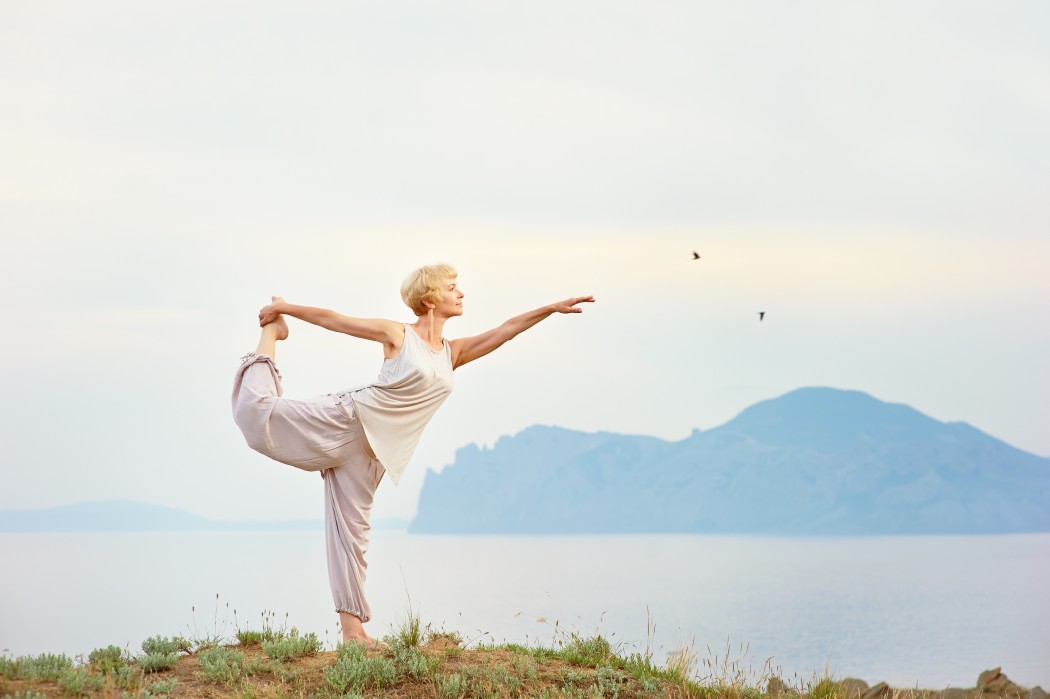Yoga is great for individuals who want to maintain flexibility, balance, and muscle strength throughout their golden years. While the exercise has been targeted towards the young and agile in North America, the tradition has always made room for older practitioners—some of the most respected yogis in the world are in their 70s, 80s, and even 90s!
Whether you’re coming back to your practice after a hiatus, or new to yoga, there’s sure to be a class for you. Just make sure you keep these 5 tips in place when you’re doing your poses.
1. Find out what your liabilities are
Everyone ages differently, and it’s important to address any potential health concerns before you start your practice. Consult your doctor about any issues, like osteoporosis or glaucoma, that may limit the poses you can do. Then, talk to your yoga instructor one-on-one about what poses will work for you and what kind of practice suits your body best.
2. Take your time during warm-ups
While some 20-year-old yogis may be able to jump right into their practice without much of a warm-up, it’s important for older practitioners to ease into their workout. Allow for some time at the beginning of class to do simple stretches and warm up your muscles. This is especially important if you are dealing with stiffness or arthritis.
3. Adjust poses to your needs
Everyone’s body is different, and everyone’s practice should reflect this difference. A good teacher will be able to help you adapt a pose to whatever your needs may be. For example, you may want to use blocks or the wall to help support you in certain positions. Straps are also a great tool for people with limited flexibility.
4. If something hurts don’t do it
This rule really applies to all yoga students, but is especially important for those over 50. When trying out a new pose, or even one that you’ve done many times before, listen to your body and stop if things begin to hurt. While it’s important to push yourself, you don’t want an injury. And don’t get discouraged! You might not be able to do something as “simple” as sit with your legs crossed, but that doesn’t mean you can’t do a more challenging position that requires a different strength.
5. Have fun!
Yoga should be a joy to practice! Your body should feel good and your mind relaxed after a class. Just remember to move at your own pace, listen to your body, and communicate with the instructor. Even when you’re in a class of 30, they’re there to help you achieve your yoga goals.
Namaste!

























